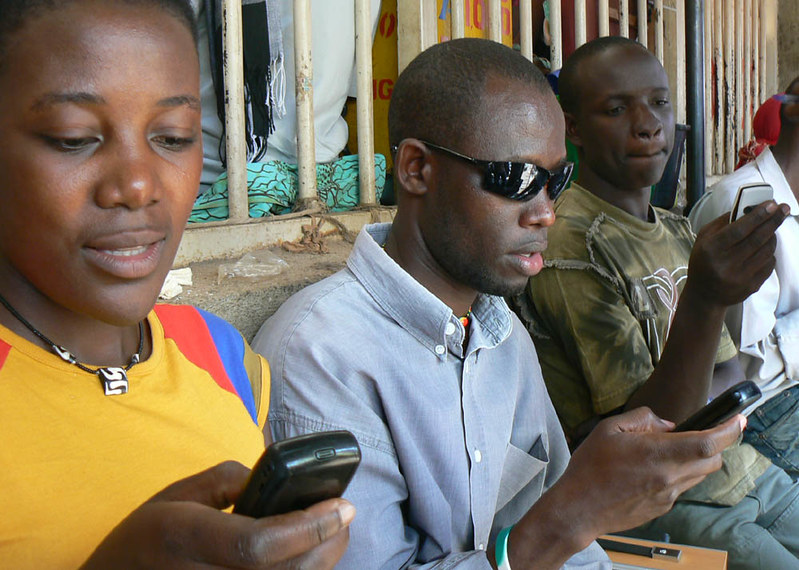February 25, 2013
This is a joint post with David Boyd.Mike is in a hurry to get home from work – eager to see his family and put his feet up after a long shift.It’s 5pm on a chilly winter day in Detroit and he’s waiting for his bus to come. Thanks to TextMyBus.com and the Detroit Department of Transportation, he is able to use his cell phone to discover that the next bus is due in just 10 minutes. A few minutes go by and he heads outside right before it’s scheduled to stop. But after 10 minutes, no bus. After 30 minutes, his bus finally shows, but spending an extra 20 minutes in below freezing weather and snow means that Mike gets a nasty cold and misses a few days of work.In my recent blog post, "Make a Consumer Reports for Aid," I detailed four questions that are important to answer in the quest for fully realizing the benefits of feedback loops. In this post, we focus on framing question #4:“And, perhaps most important, how do they ensure that the feedback mechanisms are broadly adopted and actually lead to positive changes in aid projects?"While broad, we can answer it in part by examining Mike’s situation and the “positive changes in aid projects” that can result from the closing or completing of feedback loops.What if Mike, also through the TextMyBus platform, could use SMS to alert the Detroit DOT of his situation? If his bus is confirmed to be late, he becomes eligible to receive a token for a free ride, incentivizing him to take part in the feedback process. Also, what if Mike’s feedback triggered an automatic “late” report via email to the on-call manager at DOT, which stated the date, time, bus number, and driver?And what if the same report gets copied to the Customer Service manager and pops up on a specialized, real-time “dashboard” on the DOT website, which is available to the public? Perhaps once monthly at its meetings the Detroit City Council receives a “DOT Accountability Report” with overall statistics for the bus service pulled from the dashboard, with a senior DOT employee in attendance to defend its service metrics publicly.Mike is now compensated monetarily with a token, while more importantly his report has made it up to two separate managers at DOT, and has been made publicly available via the DOT dashboard and a monthly report to City Council. Wouldn’t this be a recipe for increased accountability? No manager wants to stand in front of a public body having to explain why his/her buses continue to be late (click here for a feature on CitiStat in Baltimore, which has successfully utilized feedback and a similar accountability design for public services).A feedback loop requires a free flow of information amongst stakeholders involved in a project or initiative. Service providers, beneficiaries, and other third-party stakeholders are all involved at various levels. In Mike’s case, we have an example of the ALMOST feedback loop, an information service that could arguably become more effective utilizing a COMPLETE feedback mechanism – i.e. allowing Mike to provide immediate information back via the same SMS platform, which can then be used to help hold the DOT accountable in a public forum.It’s not difficult to imagine how “completing the loop” is important for other aid projects. Take, for example, IPaidABribe.com.Created in 2010, IPaidABribe allows those that have paid a bribe (or resisted paying a bribe) to anonymously post their reactions to the experience.Currently the site lacks “teeth” or a built-in design mechanism to close the loop. But as documented in the New York Times, feedback on IPaidABribe was used on at least one occasion in Bangalore, India by a transport commissioner to push through reforms at a motor vehicle department where bribes were detected – as a result an automated driving test track was implemented and nearly 20 senior employees were cautioned (with some receiving ethics counseling).In cases like this, the initiative to use feedback to close the loop could be reactionary (pressure is applied by outside forces) or proactive (good management). Understanding incentives involved can be tricky, and is a topic that we will discuss in a future blog post (so stay tuned!).Ultimately, how do we turn an ALMOST feedback loop into a CLOSED feedback loop, which helps create “positive changes in aid projects?”One step toward answering that difficult question is by having conversations as to how we might design a framework of closed feedback loops from many promising initiatives already in play, like TextMyBus’s transparent information or IPaidABribe’s reporting mechanism.We welcome your comments and feedback on the topic. Help us continue the conversation by emailing us at aidfeedback@gmail.com or tweeting @DennisWhittle using #feedbacklabs.
Disclaimer
CGD blog posts reflect the views of the authors, drawing on prior research and experience in their areas of expertise. CGD is a nonpartisan, independent organization and does not take institutional positions.





